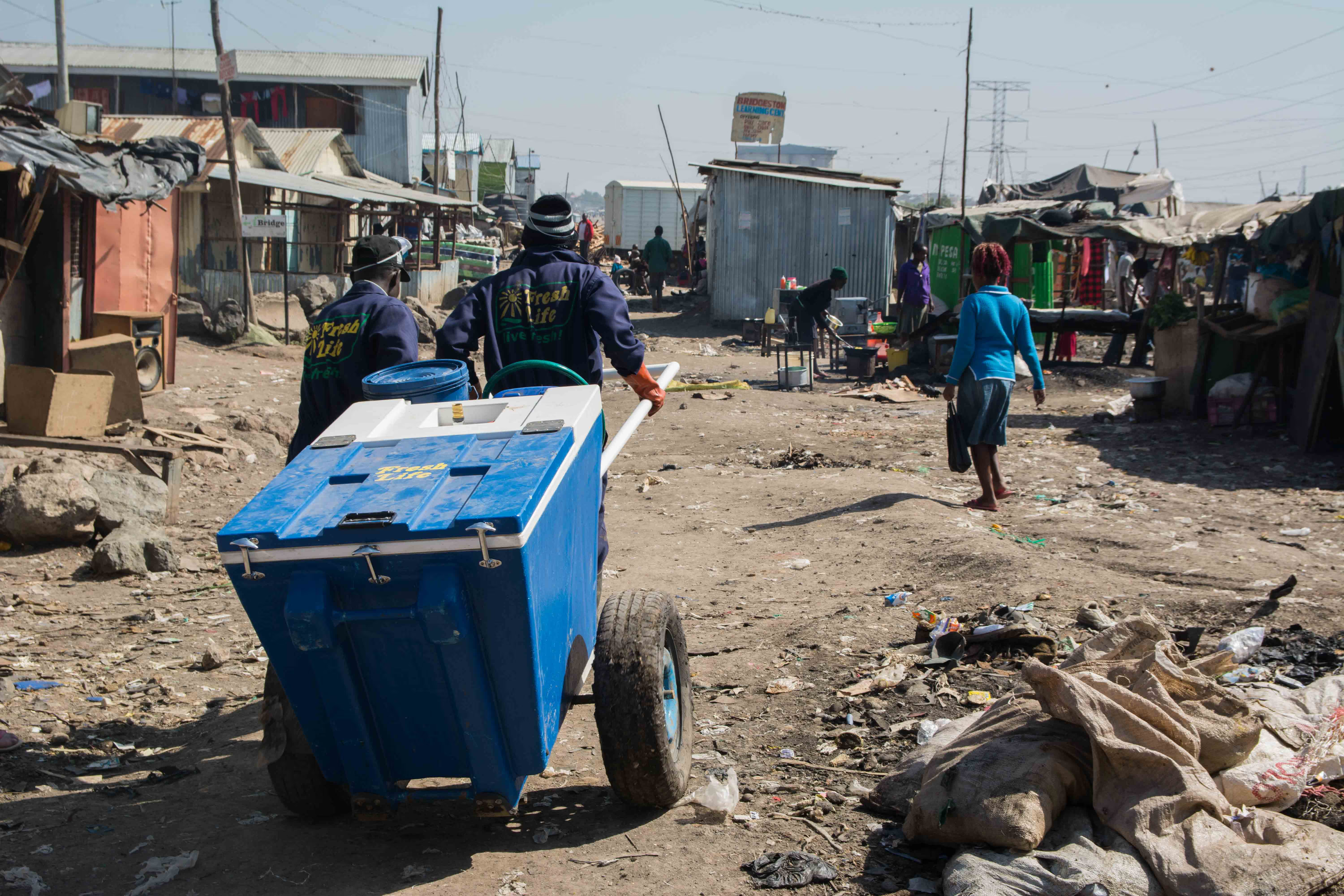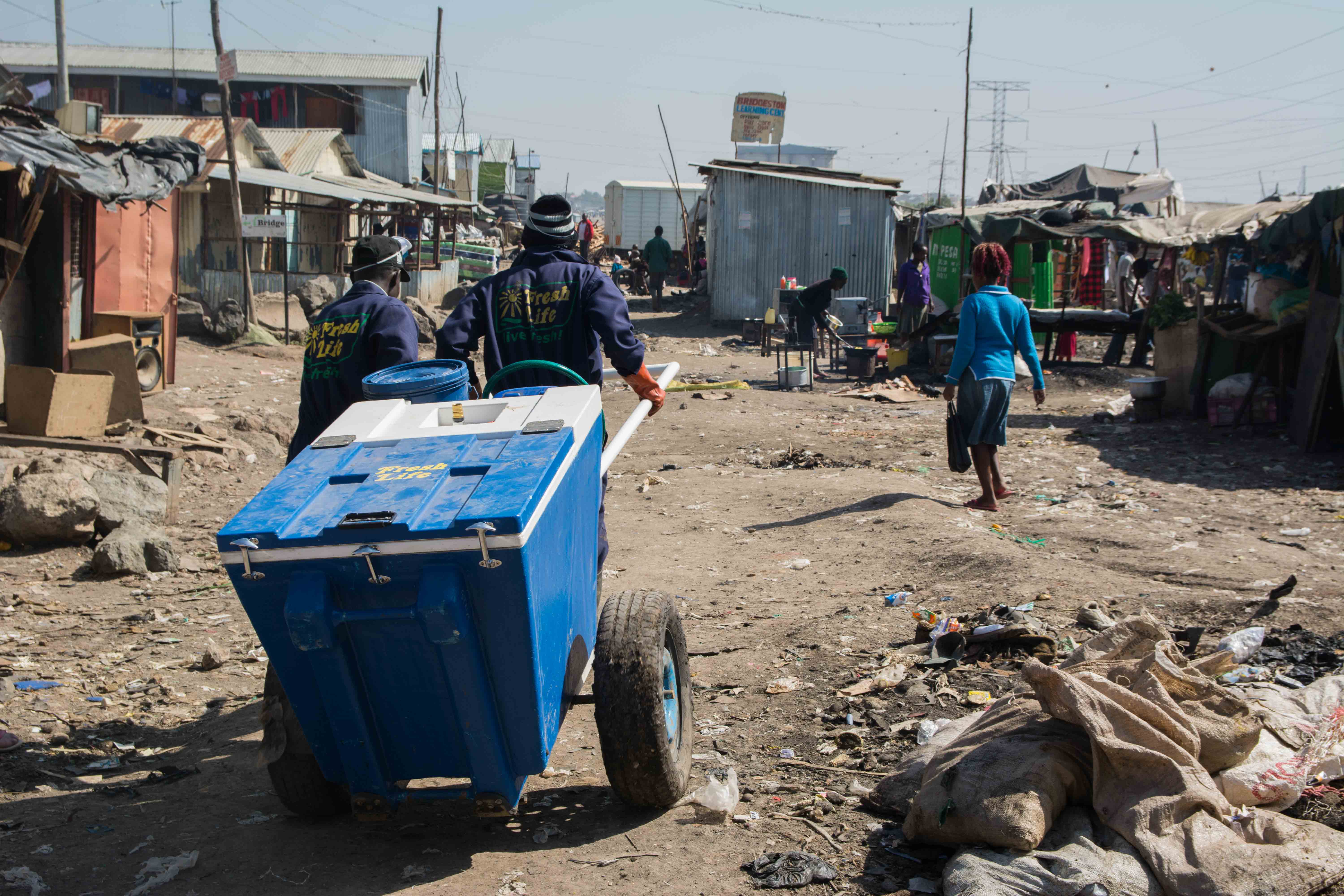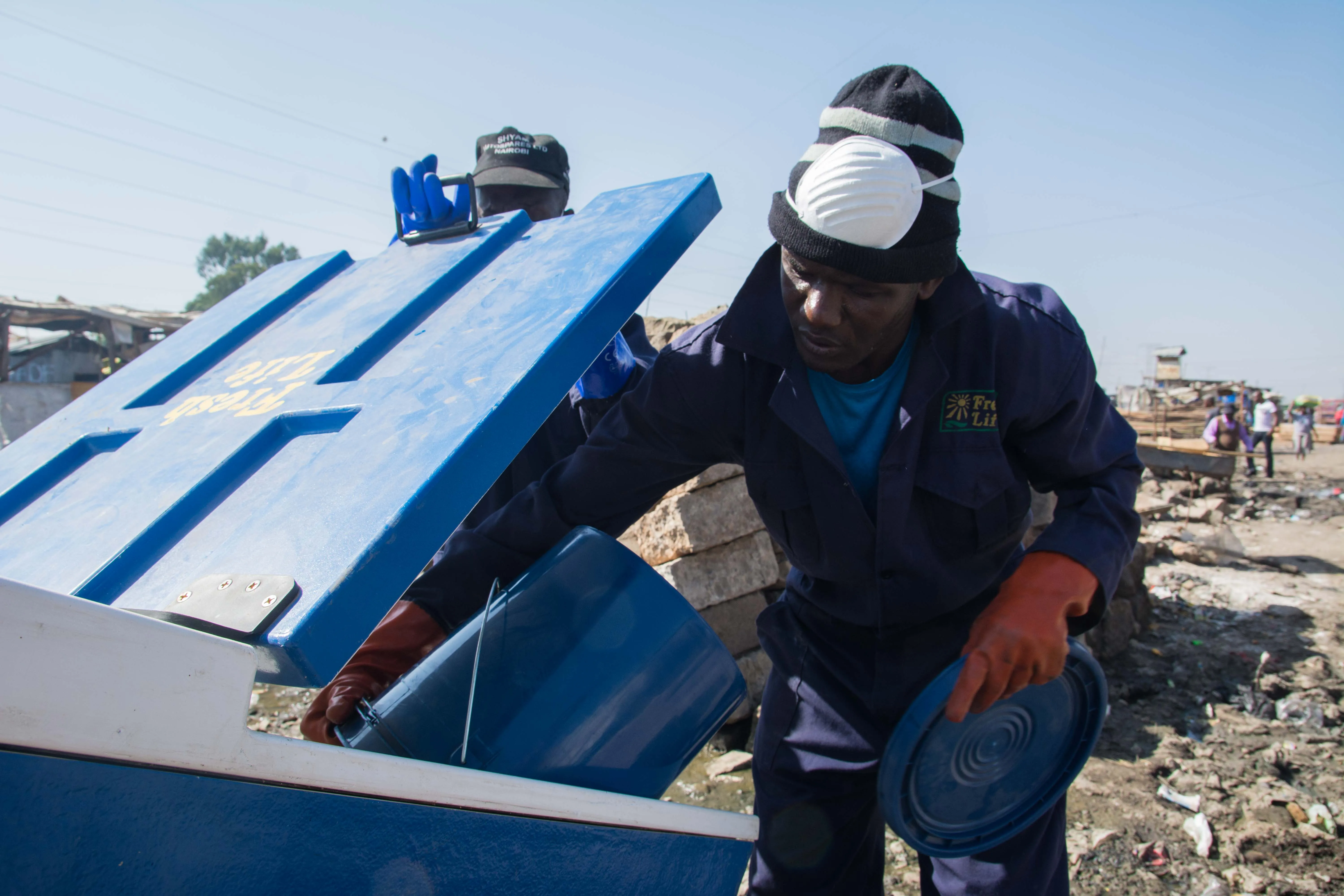Testing a solution for mobile waste transfer in urban slums

In the days and weeks after a disaster, responders arrive, bringing standard large-scale kits for most needs, such as shelter and clean water. They bring clothing and blankets and fuel, and whatever else is needed for life to return to some semblance of normalcy. However, when the usual systems and services cease to function, one of the biggest challenges isn’t what is missing, but rather what starts accumulating. Sanitation solutions have proven difficult to standardize and quickly deploy at scale how to safely collect and remove human waste in rapid onset and ongoing emergencies with inadequate sanitation systems remains a critical question for aid organizations, social enterprises, and communities.
With this question in mind, Sanergy partnered with GOAL, to pilot a system for the safe consolidation and containment of fecal sludge using a network of robust and deployable mobile waste transfer stations (mWTS), which isolate hazardous waste from the community and allow for efficient transport to disposal or treatment sites.
Here at Sanergy, we’re familiar with the challenges of safely and professionally collecting and removing human waste. For the last five years, we have worked to address the sanitation crisis in urban slums, providing the products and services necessary to offer hygienic sanitation to community residents. We build and franchise toilets, safely collect and remove the waste, and treat and convert it into valuable end-products. We have a network of 626 toilets in Nairobi’s urban slums, from which we collect on a daily basis. The challenges of operating such a wide logistics network in the adverse conditions found inside urban informal settlements are not far removed from the problems faced by aid organizations during a rapid-onset emergency.
As we strive to improve the efficiency of our own collection systems and develop solutions that could work in other contexts, Sanergy’s product design team has designed and piloted a prototype mWTS.
Along the way, the testing team collected detailed data on time and resource requirements for each step in the process, with the goal of more accurately determining the feasibility of large-scale mWTS implementation. They noted and tracked ease of use, durability of the design, and the efficiency of the process to collect and remove waste.
In an upcoming post, we will share the preliminary findings of our pilot and what we envision for a way forward.
Sanergy, Nairobi, 3 March 2016

The mobile container has two storage units – one for solid waste, and one for liquid – which can hold up to 300 litres of fecal waste and 100 litres of urine. The lid features a hinged door for solid waste bags that can be locked into place for secure transport. Liquid waste is poured through a commonly available fitting, allowing for compatibility with a range of collection cartridges. The entire container is fitted onto a removable axle and handles for flexible transport that does not rely on vehicle access. In addition, the geometry of the container is intended to make the units stackable for more efficient transport to and from locations.

Once the prototype was developed, we launched a five-week pilot to test the mWTS in Nairobi’s Mukuru slum. We tested three mWTS units on three different collection routes. Manned by two-person collection teams, each mWTS removed the solid and liquid waste from seven to eight toilets per day, seven days a week. Once they had finished their collection route, they were loaded on a pickup truck and taken directly to our processing site, where the waste was offloaded, the containers were cleaned, and they were returned to Mukuru to be used again the next day.
Stay updated
Sign up for our newsletter to receive regular updates on resources, news, and insights like this. Don’t miss out on important information that can help you stay informed and engaged.
Related articles
.png)


Explore Elrha
Learn more about our mission, the organisations we support, and the resources we provide to drive research and innovation in humanitarian response.